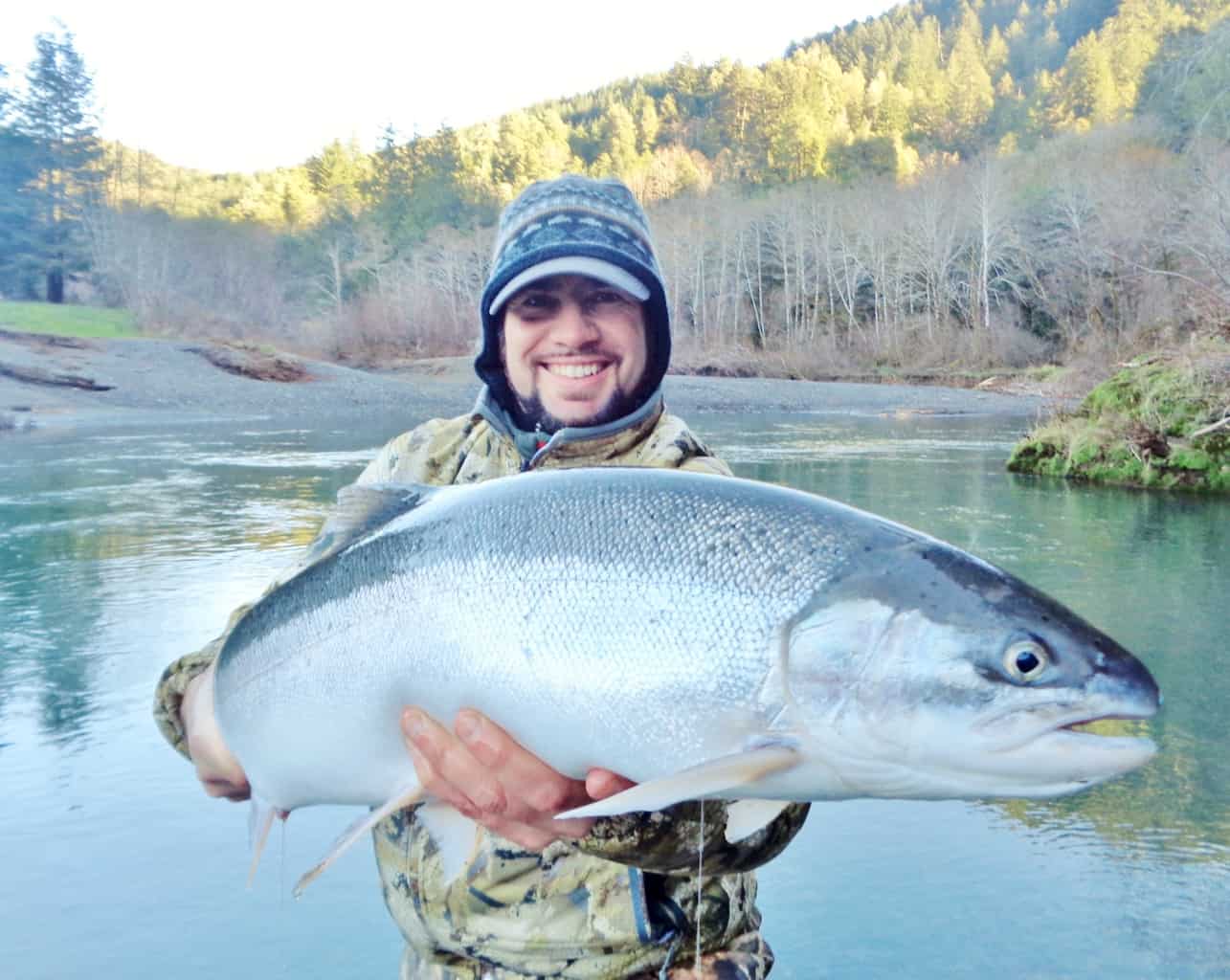The Sixes River on the far-southern Oregon Coast is best-known for its wild runs of Chinook salmon and winter steelhead, with harvest opportunities for big fish stretching from fall into early spring.
The Sixes enters the ocean on the north side of Cape Blanco State Park, a few miles north of the similar-sized Elk River, which also has similar fishing opportunities.
The Sixes is roughly five miles north of Port Orford and a shade over 20 miles south of Bandon along Highway 101.
In contrast to the nearby Elk and some other southern coastal rivers, the Sixes tends to hold a steadier water flow and drop more slowly.
So at times when other rivers including the Elk are running too low and clear for productive fishing, the Sixes can be an excellent choice, according to guide Charlie “Steelhead” Brown of Fishing the Rogue.
Best Spots to Fish

There is access to the tidewater areas, which can be productive for Chinook, at a few points along the lower part of Cape Blanco Road and the state park.
There also is a boat launch servicing this lowest area. If ocean regulations permit, Chinook can sometimes be caught from the beach areas at the mouth.
There also is bank access and boat put-ins and take-outs at the Highway 101 bridge (head down from the store on the northwest side) and upriver along Sixes River Road at Mid-Drift and at Edson County Park.
Drift boat access is excellent from the Edson launch downriver.
Bank access is relatively hard to come by elsewhere on the Sixes because much of it runs across private property, but there are a few spots that can be reached from Sixes River Road up to the fishing deadlines.
The deadlines are located at Edson Creek (just upriver from the county park) for Chinook and another seven or so miles farther up the road at the South Fork for steelhead.
Always check deadlines and other Sixes River fishing regulations before fishing, because things change in salmon country. Use the ODFW links below to get to the newest agency information.
For example, in-season closures have occurred on this and nearby rivers during low-water periods that can threaten migration and spawning.
Salmon Fishing

The Chinook run in the Sixes is strictly wild and some years the catches here can be significantly below those in the nearby Elk, which has both hatchery and wild Chinook runs.
But there are excellent years here, including more than 1,700 salmon tagged in 2014, which it topped its nearby southern neighbor.
The Sixes, also like the Elk, tends to have late-returning salmon runs in part because these jumbo fish must wait for heavy fall rains to lift the river levels enough to cut through sand dunes that build up at the mouth of this smallish river every summer.
In recent years the catches have started rolling in during October but more fish were tagged in November and into December.
Learn more about fall Chinook salmon fishing in southwestern Oregon here.
Steelhead Fishing

The steelhead arrive on the heels of the Chinook, with the first catches typically tagged in December and continuing through March.
Many years the best results will come during February and March, which are prime months for wild winter steelhead.
The Sixes is one of a select number of Oregon rivers where a moderate bag limit is available for wild steelhead.
At this writing, you can tag one wild steelhead per day and three per year, but check with ODFW for updated regulations. Speaking of regs, there is a new wild steelhead harvest tag and a South Coast winter steelhead validation requirement.
With a lack of a hatchery run and limited bank access, steelhead harvests here are modest.
In recent seasons a bit more than 200 steelhead were tagged per year, which is in the same ballpark as the Elk’s steelhead output.
But savvy anglers know that harvest numbers only tell part of the story, and catch-and-release steelhead fishing can be very good here.
Brown regularly fishes the upper Sixes for steelhead. It is remote and challenging, but there is potential to catch some big fish.

We have more about Winter Steelhead Fishing on the South Coast.
Trout Fishing
Like other coastal rivers in Oregon, the Sixes also has a good population of wild cutthroat trout.
The sea-going version of this native trout, known as a searun, typically moves back into the river during mid- to late summer and can be caught on lures and flies.
Bait use is restricted for much of the season above tidewater areas.
Cutthroat also will stay in the river year-round.
These resident trout are often more common in upper reaches of streams, including Edson Creek and the forks, where higher elevations and forested canopies mean cooler water that is to the liking of these fish.
Fishing for resident trout is often best during chilly weather, meaning soon after the spring opener or again before the season closes in the fall.
Summer trout fishing can be tougher.
Find more fishing spots in Curry County
Oregon Resources
ODFW Weekly Fishing Report
ODFW Trout Stocking Schedule
Oregon Fishing Regulations
National Weather Service

